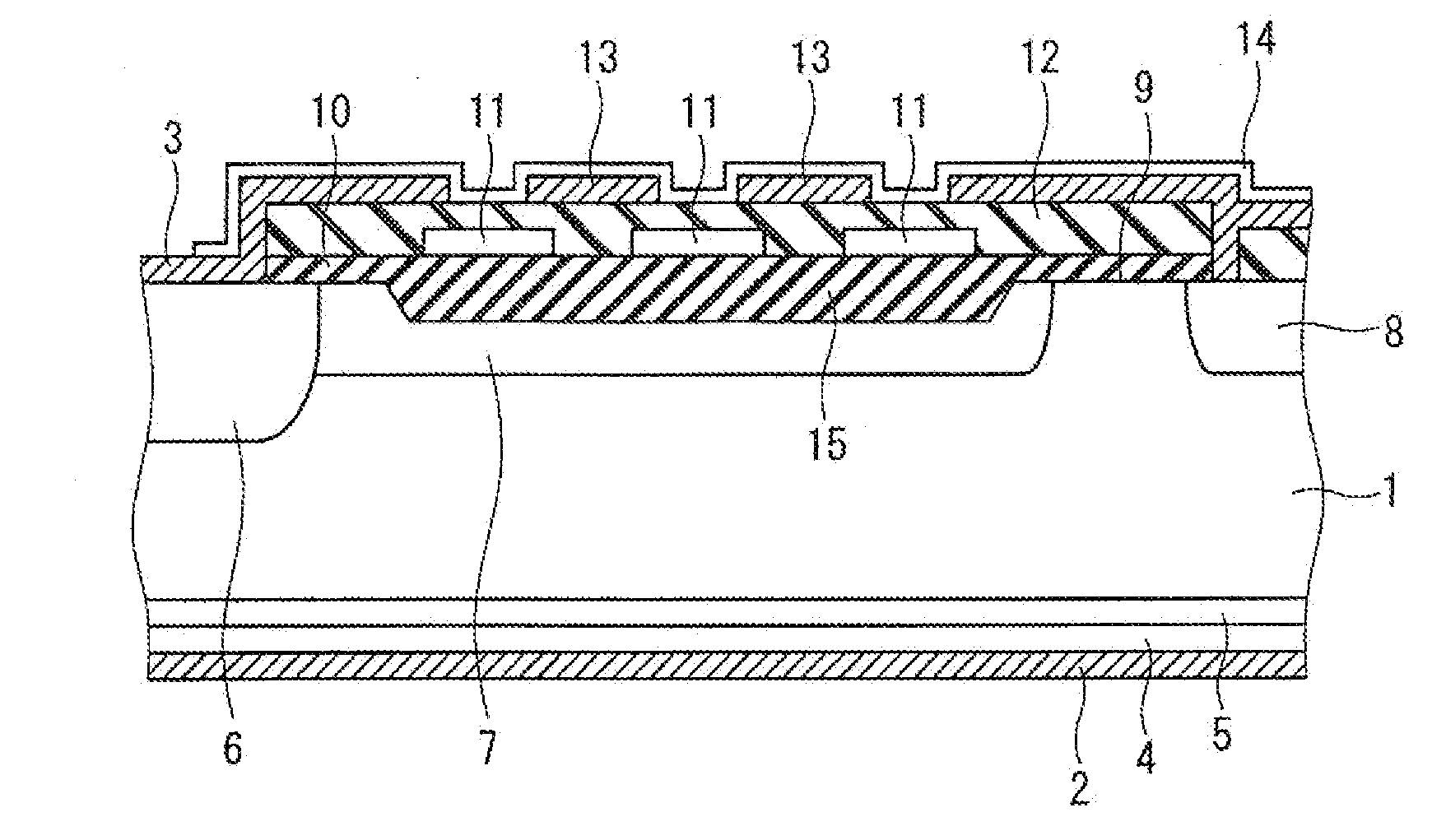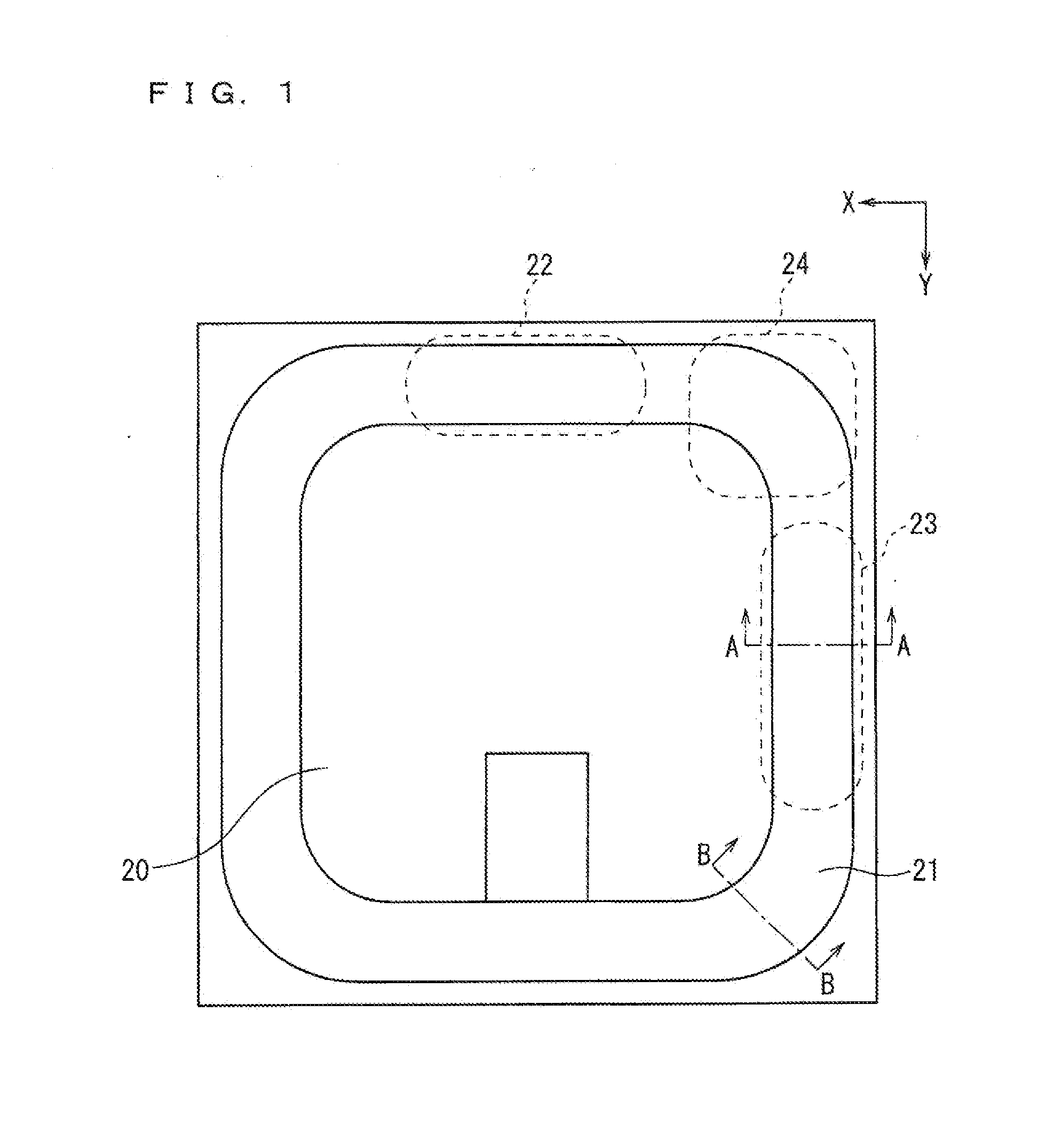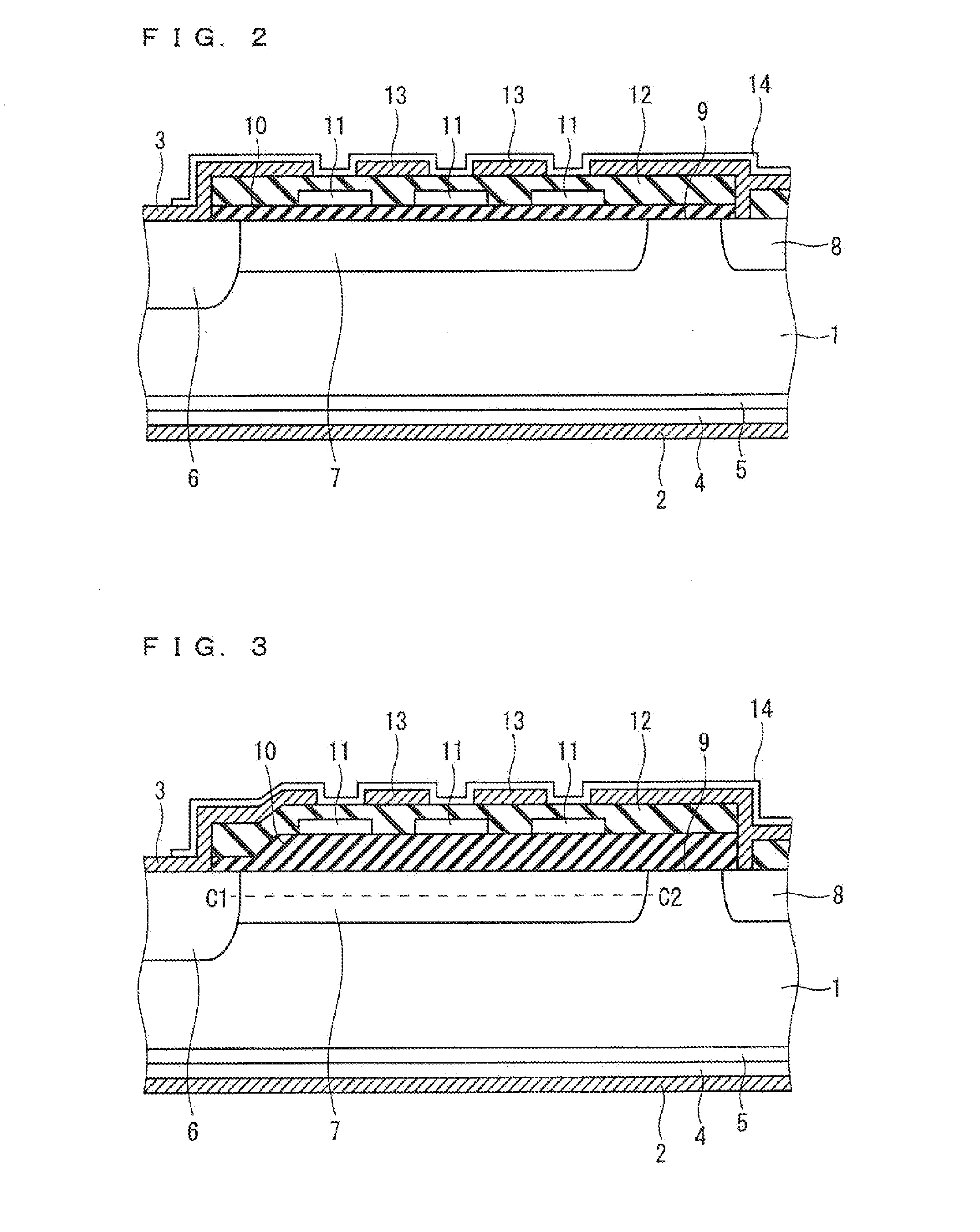Semiconductor device
a technology of semiconductor devices and semiconductors, applied in the direction of semiconductor devices, electrical devices, transistors, etc., can solve the problems of failure to apply termination regions, and achieve the effect of improving the breakdown voltage performance of semiconductor devices
- Summary
- Abstract
- Description
- Claims
- Application Information
AI Technical Summary
Benefits of technology
Problems solved by technology
Method used
Image
Examples
first preferred embodiment
[0048]FIG. 1 is a plan view illustrating an example of a configuration of a semiconductor device according to a first preferred embodiment of the present invention. FIG. 2 is a cross-sectional view illustrating an example of a configuration taken along a line A-A of FIG. 1, and illustrates the configuration of the cross-section of a Y-direction straight portion 23 of a termination region 21. FIG. 3 is a cross-sectional view illustrating an example of a configuration taken along a line B-B of FIG. 1, and illustrates the configuration of the cross-section of a corner portion 24 of the termination region 21. While FIG. 2 illustrates the configuration of the cross-section of the Y-direction straight portion 23, a configuration of a cross-section of an X-direction straight portion 22 is similar thereto.
[0049]As illustrated in FIGS. 1 to 3, in the semiconductor device according to the first preferred embodiment, the first insulating film 10 formed in the termination region 21 is thicker i...
second preferred embodiment
[0060]FIG. 6 is a cross-sectional view illustrating an example of a configuration taken along a line B-B of FIG. 1, and illustrates the configuration of the cross-section of a corner portion 24 of a termination region 21.
[0061]In a second preferred embodiment of the present invention, a substrate surface 9 of an n− type substrate 1 includes a recessed region 15 formed in a recessed shape in the corner portion 24. Other configurations are similar to those in the first preferred embodiment and description will be omitted.
[0062]As illustrated in FIG. 6, the formation of the recessed region 15 in the corner portion 24 enables a first insulating film 10 to be thicker in the corner portion 24 than in an X-direction straight portion 22 and a Y-direction straight portion 23. A surface of the first insulating film 10 may be made flush between the corner portion 24 and a straight portion (the X-direction straight portion 22, the Y-direction straight portion 23).
[0063]Thus, according to the se...
third preferred embodiment
[0064]In a third preferred embodiment of the present invention, a recessed region 15 according to a second preferred embodiment is formed by a local oxidation of silicon (LOCOS) method.
[0065]FIGS. 7 to 9 are diagrams each illustrating an example of a manufacturing process of a semiconductor device according to the third preferred embodiment. In particular, FIGS. 7 to 9 each illustrate an example of a process of forming the recessed region 15.
[0066]As illustrated in FIG. 7, a nitride film 16 is formed on a substrate surface 9 of an n− type substrate 1 so that a portion of a surface of a p− type breakdown voltage holding region 7 is exposed. In other words, the nitride film 16 is formed so that the portion of the substrate surface 9 in which the recessed region 15 is to be formed is exposed.
[0067]Next, as illustrated in FIG. 8, an oxide film 17 having a LOCOS shape is formed by a thermal oxidation process.
[0068]Next, as illustrated in FIG. 9, the recessed region 15 is formed by elimin...
PUM
 Login to View More
Login to View More Abstract
Description
Claims
Application Information
 Login to View More
Login to View More - R&D
- Intellectual Property
- Life Sciences
- Materials
- Tech Scout
- Unparalleled Data Quality
- Higher Quality Content
- 60% Fewer Hallucinations
Browse by: Latest US Patents, China's latest patents, Technical Efficacy Thesaurus, Application Domain, Technology Topic, Popular Technical Reports.
© 2025 PatSnap. All rights reserved.Legal|Privacy policy|Modern Slavery Act Transparency Statement|Sitemap|About US| Contact US: help@patsnap.com



